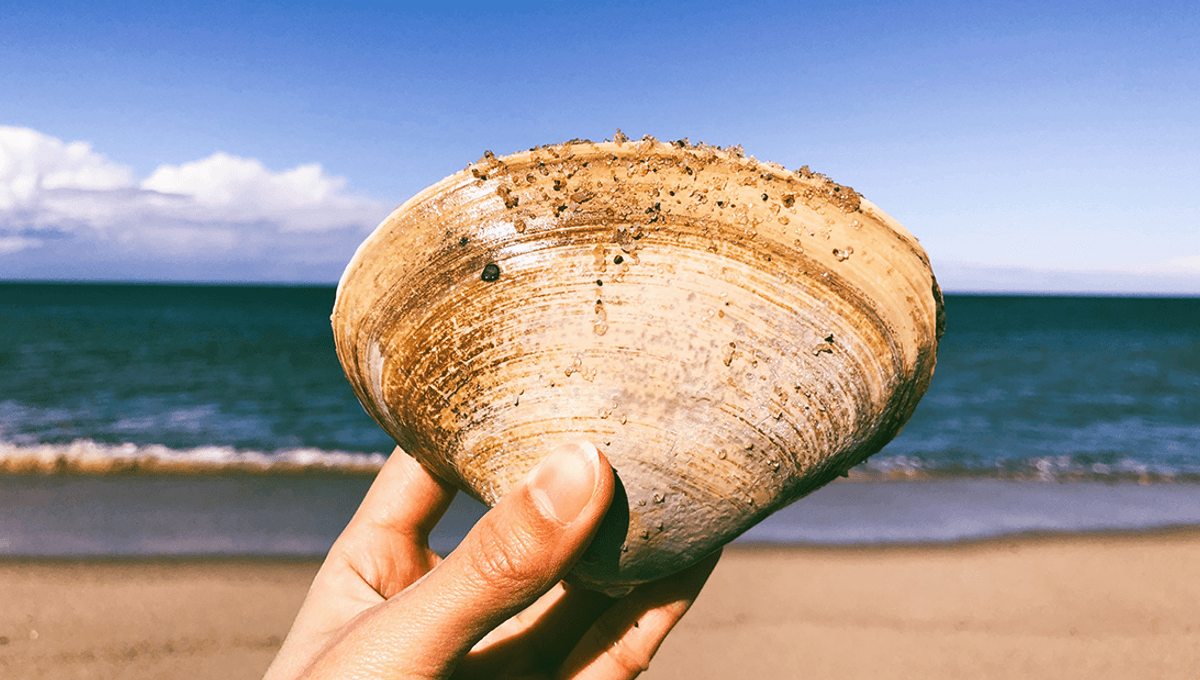
A Florida man digging for shellfish on a beach was surprised to discover an abnormally large clam – and it turns out the clam is thought to be over 200 years old.
Discovered on Alligator Point in Florida, USA, by Blaine Parker, the clam is a species known as the ocean quahog (Arctica islandica). In a similar style to a tree, this type of clam can be aged via the growth rings on its shell. Since Parker counted 214 rings on the specimen, the clam is thought to date back to 1809.
1809 is the year that Abraham Lincoln was born; so the clam has been given the nickname Aber-clam Lincoln. Most clams of this variety are between 7 and 11 centimeters (2.8 and 4.3 inches) in length according to NOAA and the Gulf Specimen Marine Laboratory – but this quahog is 15 centimeters (6 inches) and weighs a whopping 1.1 kilograms (2.6 pounds).
Ocean quahogs are bivalve mollusks that are among the longest-living species on Earth, living their incredibly long lives buried in the sand at the bottom of the ocean floor. They even have made it into the record books, with Ming the ocean quahog thought to be over 500 years old.
Parker discovered this whopper while digging for shellfish at the beach to make chowder. At first, the clam was destined to be dinner, as these clams are a popular edible species – he even thought they could get two servings out of such a large clam. “We were just going to eat it, but we thought about it a while and figured it was probably pretty special. So, we didn’t want to kill it,” said Blaine Park in a statement in the Tallahassee Democrat.
Fortunately, Blaine Parker also works at the Gulf Specimen Marine Laboratory and so decided to take Aber-clam Lincoln into work. While the clam was a star attraction for a while, the team decided to release Aber-clam Lincoln back into the sea.
Source Link: Florida Man Finds Huge Two-Hundred-Year-Old Clam